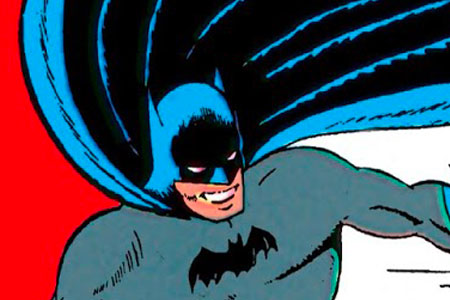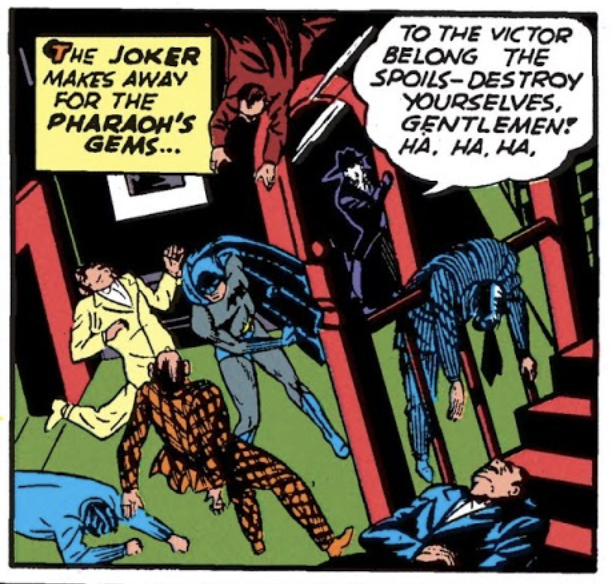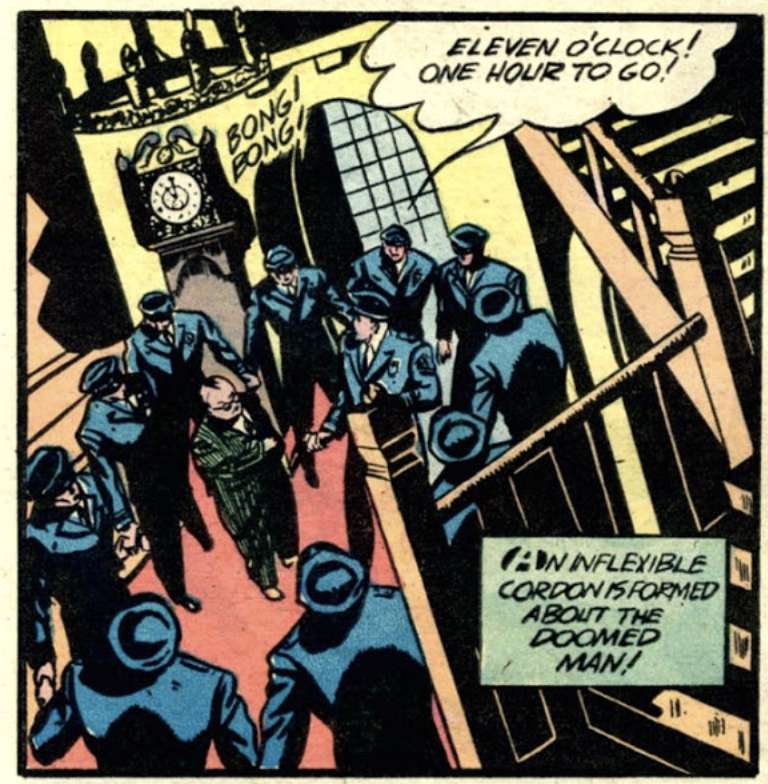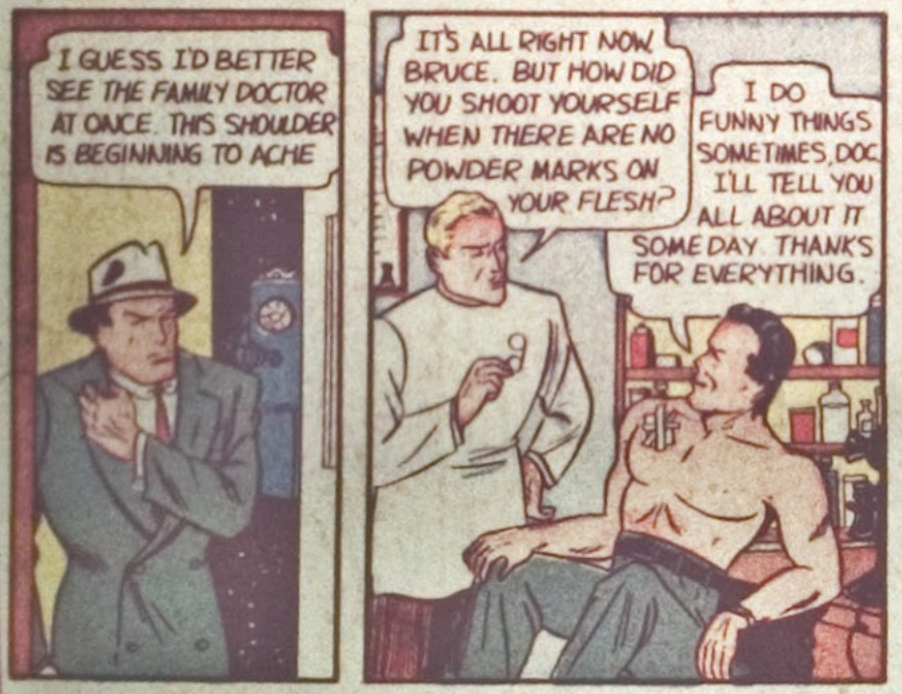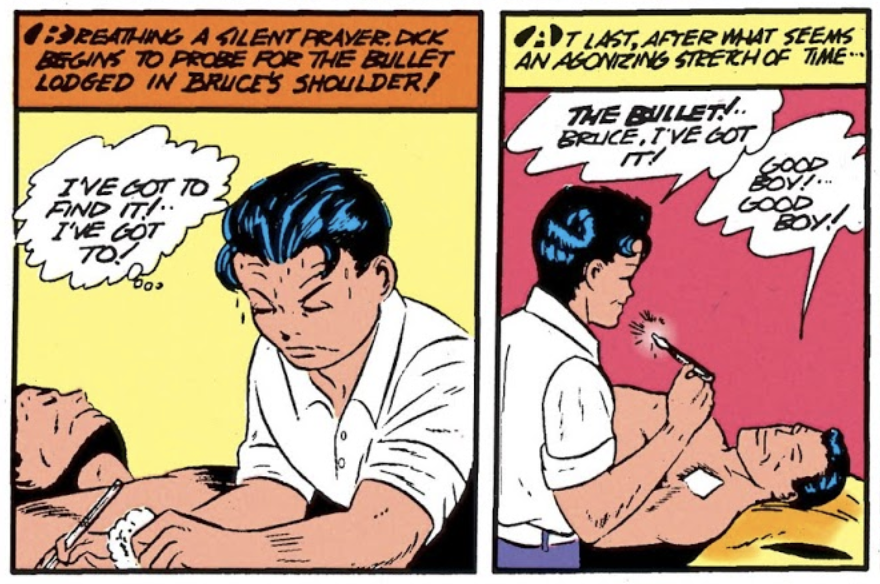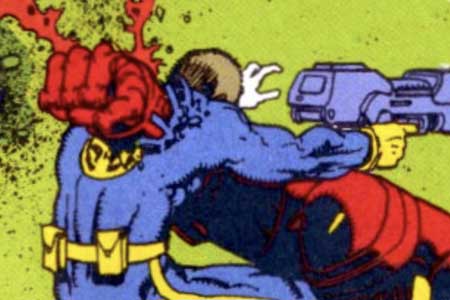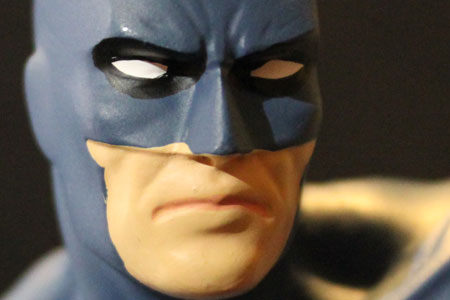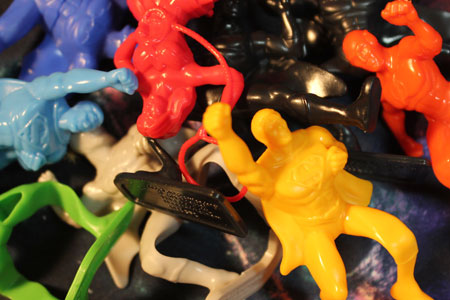
If you’re lucky enough to find a copy of Batman #2 in your attic, you’re looking at around an average value of $9000 bucks. A majority of the copies found and graded in the last 20 years have been in the 5.5 range – good, but not great. But is it actually worth reading?
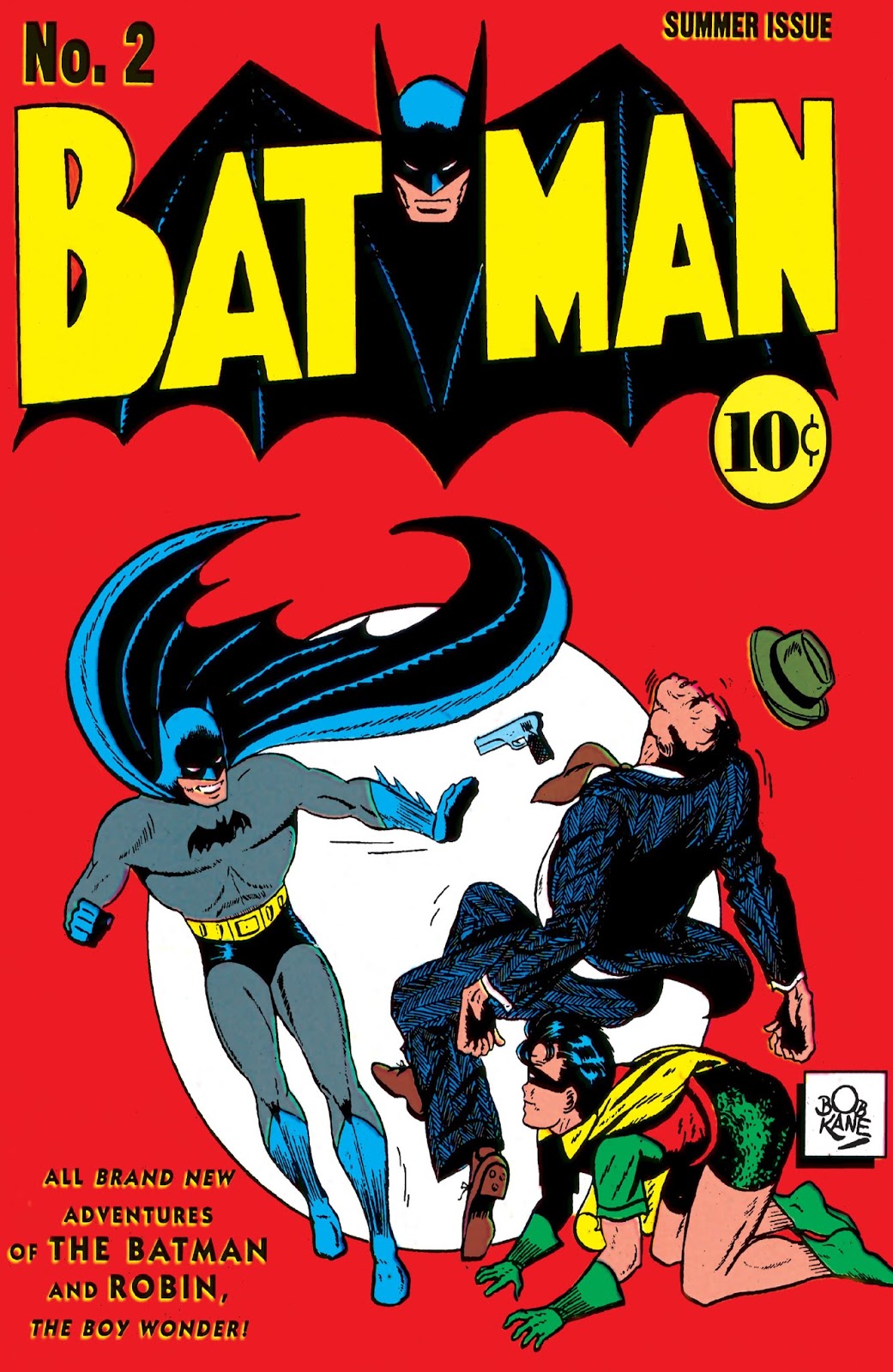
1940s Batman is still very much like Adam West’s Batman; he’s full of quips, bizarre gadgets, and he has a dopey sidekick who’s mostly useful, but also gets into a lot of trouble. He also ends up murdering a whole lot of people, either on purpose, or during the thrill of the fight. And this Batman really loves fighting. And as the cover of issue #2 suggests, using his young ward as an object over which to push criminals and possibly cripple them right out of a life of crime.
As the story of issue #2 begins, the Joker (who survived last issue’s brush with death after accidentally stabbing himself) is described as something of a spectre. Even though he’s really only been on one especially precise crime spree so far, it was enough to paralyze the world with fear. Joker’s psychological reign of terror is something that comes up occasionally, but only when he’s not really being presented as a villain with the sole goal of frustrating Batman. For now, his only real goal is to terrify his way to wealth; later on, there are times when Joker focuses on being an agent of chaos, a force to influence the minds of others towards chaotic evil.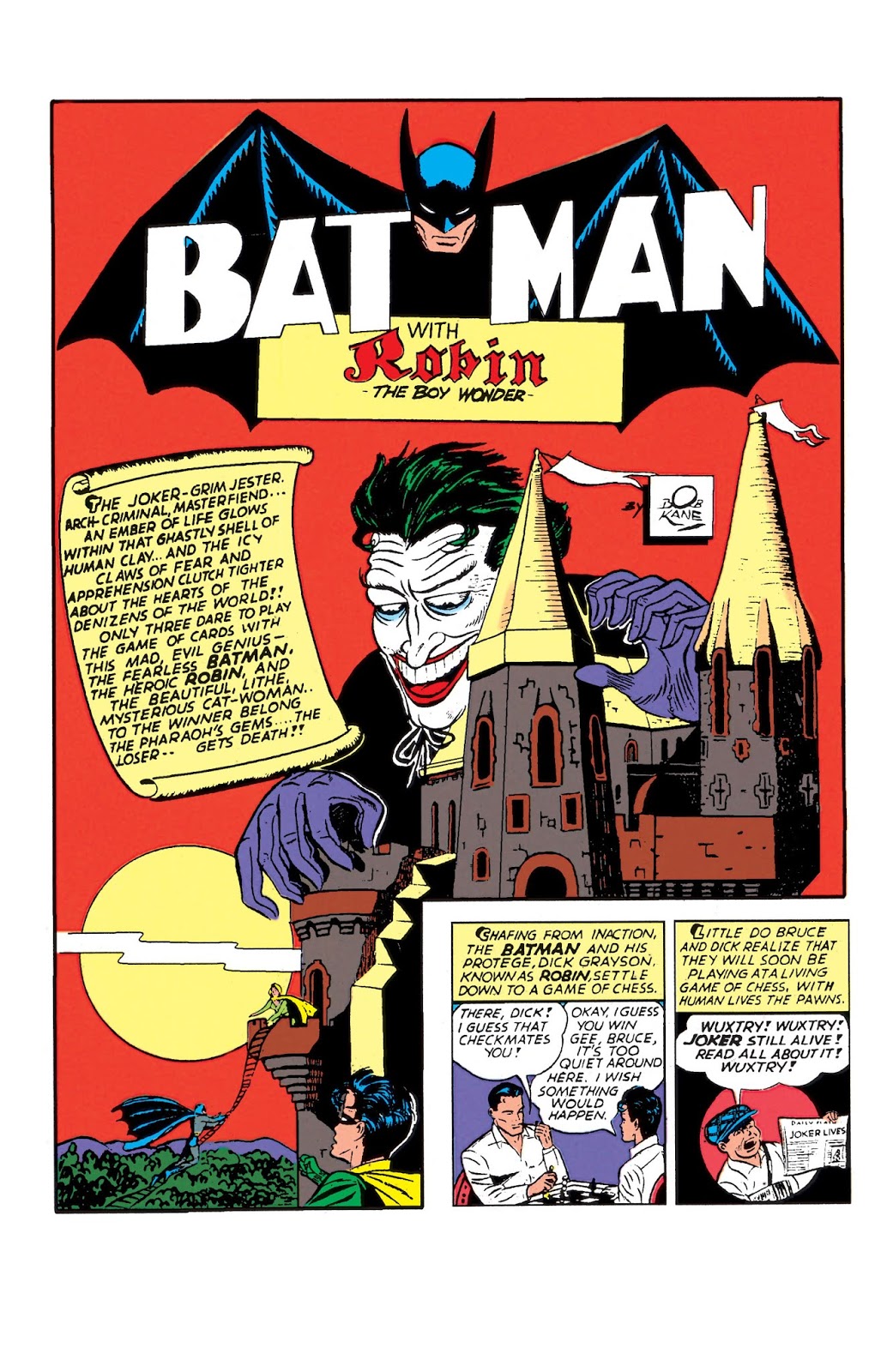 Batman forms a plan to kidnap and lobotomize the near-dead Joker before he can be a problem again… except a bunch of criminals, calling themselves the Crime Syndicate, plan on kidnapping the Joker first to make him their boss. Here’s where a whole lot of lore gets complicated.
Batman forms a plan to kidnap and lobotomize the near-dead Joker before he can be a problem again… except a bunch of criminals, calling themselves the Crime Syndicate, plan on kidnapping the Joker first to make him their boss. Here’s where a whole lot of lore gets complicated.
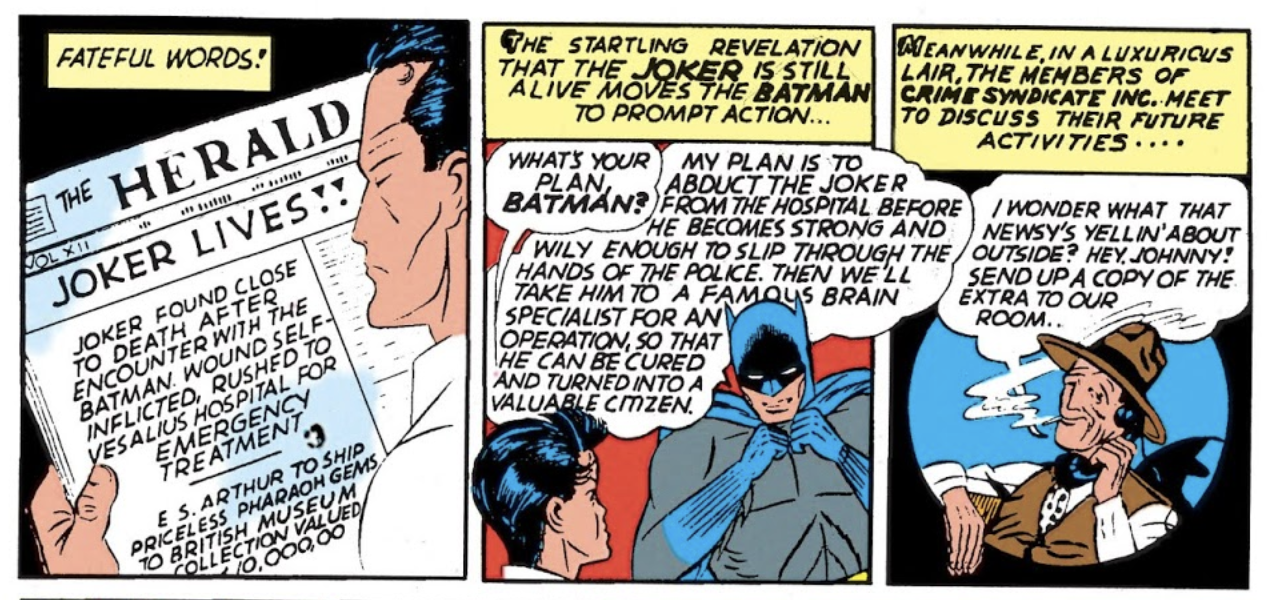
Many years later, during the Identity Crisis storyline, Batman was very much against messing with the minds of villains. When he found part of the Justice League trying to magically lobotomize Dr. Light after he’d raped Sue Dibny, Batman freaked out and attacked them, steadfastly against mentally handicapping villains. Ultimately, the Justice League had to magic Batman’s brains out too so he’d forget the whole ordeal. Batman is the anti-lobotomy poster boy… just not in 1940, when he was still pretty extreme about his treatment of bad dudes.
The other wrinkle here is that while most sources credit Justice League of America #29 (1964) as the first appearance of anything called the Crime Syndicate, this is an even earlier mention of the organization. Usually, the Crime Syndicate of America refers to the alternate-Earth version of the evil Justice League : Ultraman, Superwoman, Owlman, Power Ring, and Johnny Quick. For now, it’s just a bunch of low-rent mobsters who are so directionless that they need an insane clown to guide them. Mobsters, it should be noted, named Weasel, Mugface, and Circus Charlie.
Of course, one of the biggest stories in the papers is about a rich guy doing something public with his riches – in this case, the Pharaoh Gems. How else would criminals know where and when to strike? It all comes together in a miasma of poor choices. No wonder the world needed a Batman.
The aimless mobsters invade the hospital where Joker is undergoing surgery and threaten the doctors into doing the jobs they were already doing, while a bat-shaped figure starts throwing pebbles at the policemen standing on guard, leading them on a chase, with a few deadly fights along the way. This perplexes the police.
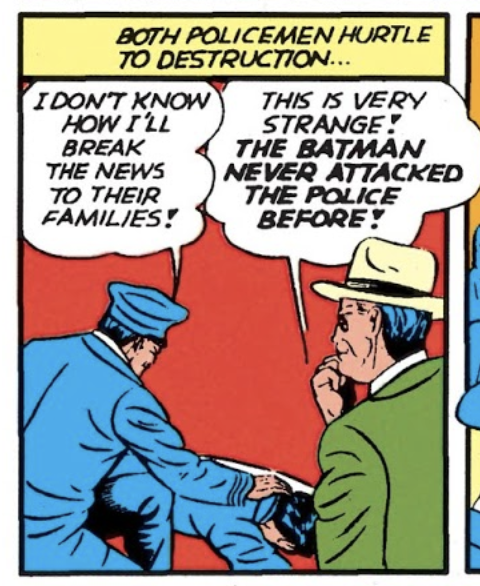 Meanwhile, last issue…
Meanwhile, last issue…
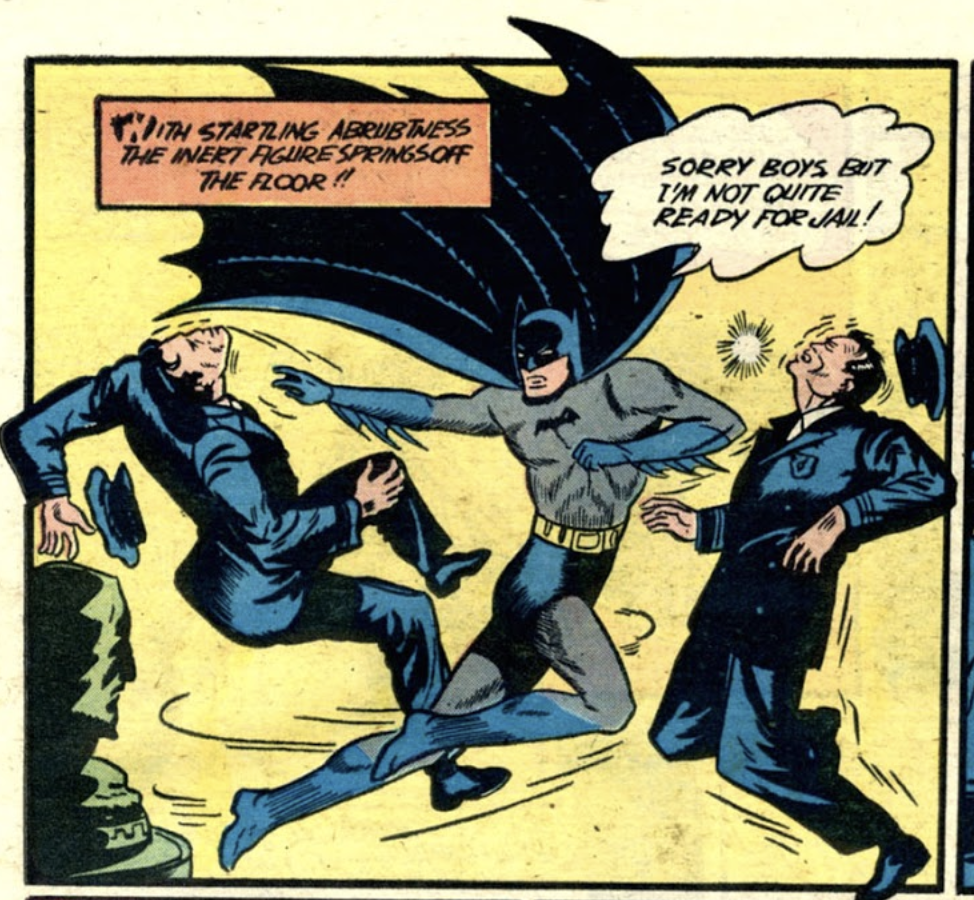
The pebble-tossing Batman is gunned down by the police, and he’s revealed to be nothing but a mobster there to distract the cops. Meanwhile, the real Batman appears at the hospital a few moments too late to abduct and mutilate the Joker himself, and finds Catwoman lurking around once again dressed as an old lady, also plotting to steal the Pharaoh Gems. They chat in the Batmobile for a few minutes, and another not-too-smart invention of Batman’s is revealed: radioactive floormats. Anyone who steps inside the Batmobile is subjected to a bombardment of radiation, which is then trackable with one of Batman’s many radiation-tracking flashlights. This is the second way Batman tracks footprints in as many issues, and why 15 different Robins have died of foot cancer.
The Joker recuperates in the Crime Syndicate’s ever-flying airplane for a week, quickly orchestrates the death of E. S. Arthur, the owner of the gems everyone’s after, and turns on the Crime Syndicate so he can get the treasure for himself, teaching the Syndicate to never trust anyone ever again. At this moment, Batman busts into the same panel that was used in the last issue for another house…
… and clobbers all of the betrayed goons, adding insult to injury, since the goons were already about to fall asleep due to a “potion” administered by the Joker. Batman is beating the teeth out of guys who are all totally ready for a nap, because that’s how 1940s Batman rolls : always eager to maim, and dispense sports trivia at the worst possible times.
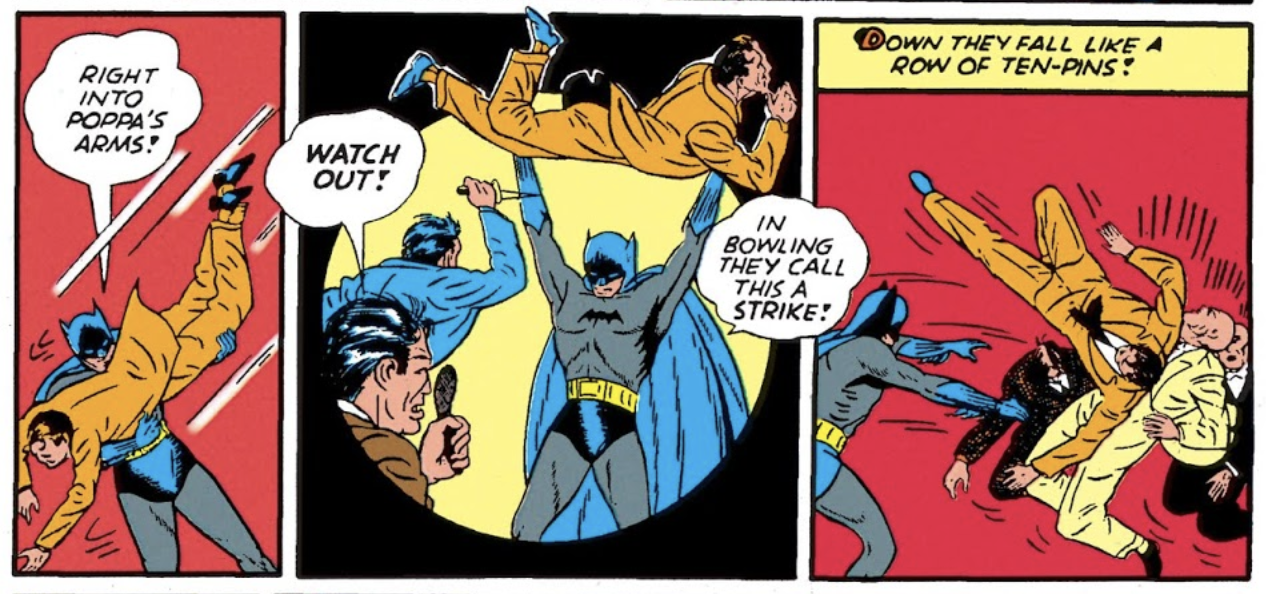
Meanwhile, Catwoman has seduced the gem-owning millionaire, and finds him dead in his castle upon her arrival. She makes off with the gems, but is thwarted by the Joker, who was hiding in the shadows. Robin, still tracking Catwoman’s radioactive shoes and slowly-creeping ankle cancer, also arrives, but gets knocked out by the Joker, who again tries to inject him with some messed-up junk. But Catwoman shows some remorse…
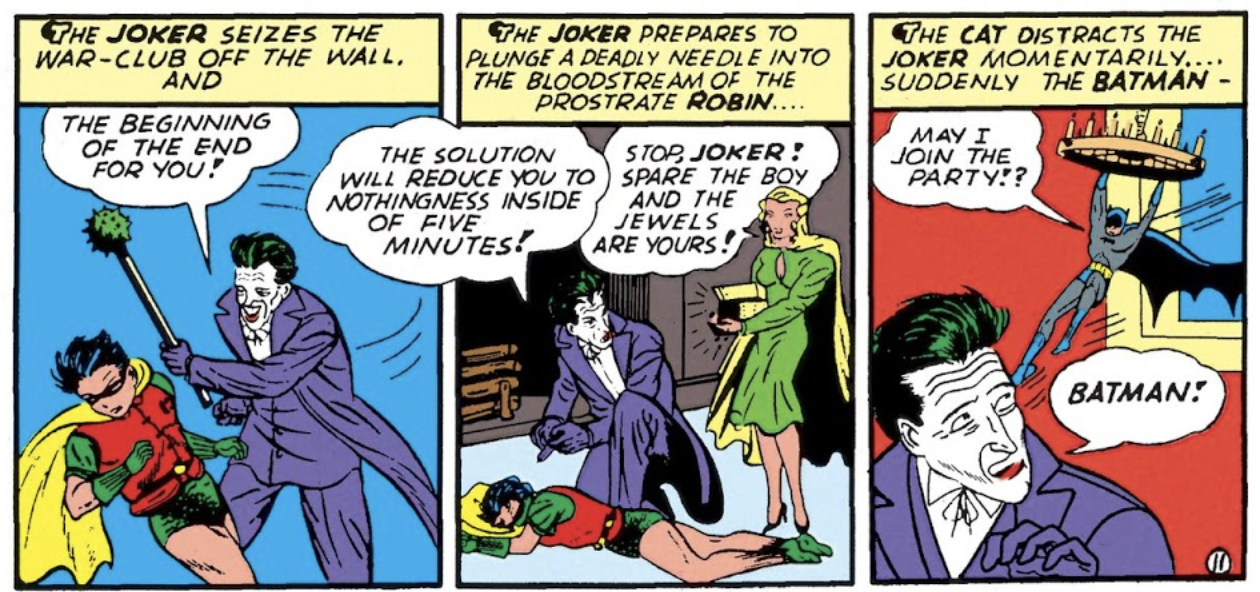
By the end of the tale, Batman leaves Joker to die in a castle burning because the Joker peppered it with flaming arrows, Batman escapes with Robin and the gems up the rope ladder of the Bat-Plane, and Catwoman escapes into the sea. The Joker’s single-minded pursuit of wealth is, so far, the entirety of his motivations towards evil, and even by issue #2, Catwoman isn’t entirely selfishly evil.
And then things get weird.
Tale number two concerns the Crime Master, aka Adam Lamb, aka Wolf, a meek museum attendant obsessed with true crime. Also, a dork we’ll never hear about again.
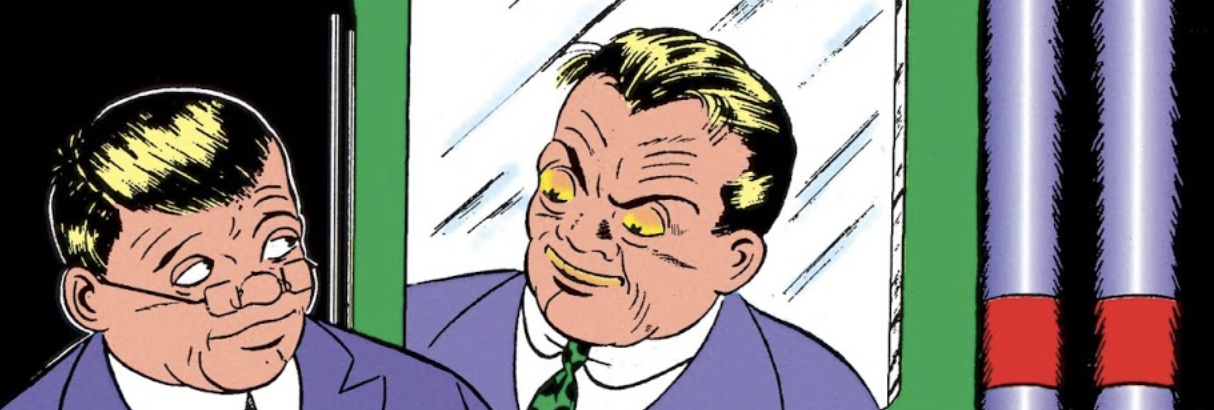
One day, Adam Lamb falls down the stairs of the museum and hits his head at the stroke of midnight, and right before he falls unconscious, he sees a mounted bat and a copy of a book he was reading, The Crime Master. The traumatic experience imprints these things onto him, and the next time the clock strikes twelve, he transforms into a horrible person and immediately beats and old man to death.
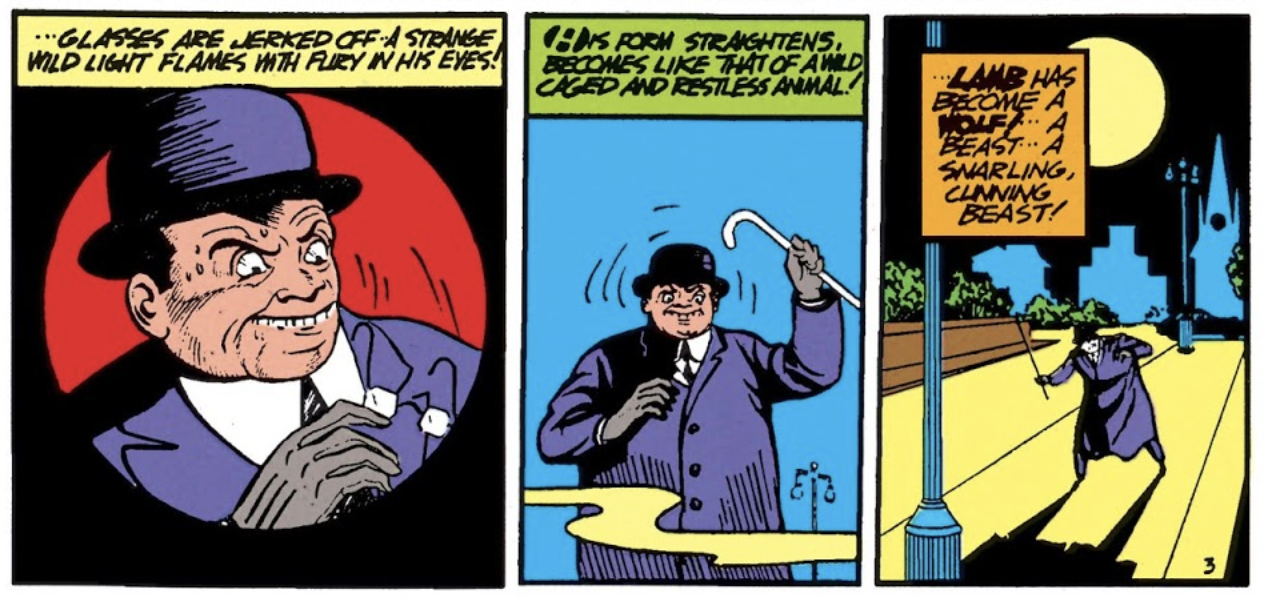
Night after night, Lamb murders innocent people. Adopting the name Wolf, he eventually eases off the serial killing and forms his own bank-robbing crime cartel. Batman takes no immediate notice, and Lamb has no memory of his dirty deeds each morning. He’s the city’s worst criminal for about 3 hours a night, at most, but boy is he a jerk. Batman finally takes notice when the gang attempts to rob a warehouse, and during the battle, Wolf knocks Robin in the dome and tosses him in front of a moving truck. Fortunately for Robin, his skull wasn’t completely caved in because he has some really, really powerful hair. And that’s no joke.
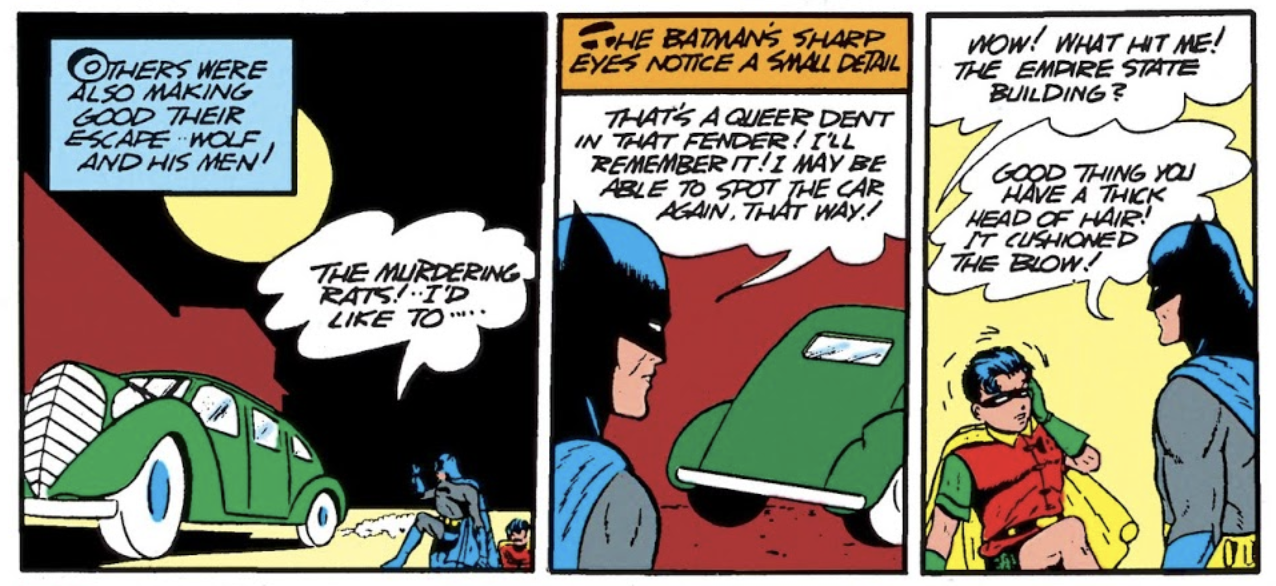
Coincidentally, Bruce Wayne spies the car in the above image at a local museum he’s visiting, where Lamb works, and the chase is on. In the ensuing tussle, Batman is shot and Robin has to dig the bullet out, because Alfred isn’t a thing in the comics yet, and his suspicious doctor only JUST removed a bullet from him in Detective Comics #29, hardly any questions asked. Fortunately, it was Batman’s other shoulder.
While he’s recovering, Bruce coincidentally finds a copy of The Crime Master in his own study and realizes that life is imitating art. It all comes together; Lamb is Wolf, and his next crime is murder! Batman and Robin show up at the museum just in time to kick Lamb/Wolf/Crime Master down a flight of stairs, killing him in the process. With his dying breath, Lamb finally finds clarity, but just like in issue #1, Batman has killed a mentally ill villain who simply knew no better. But at least time time, he’s a little sorry about it.
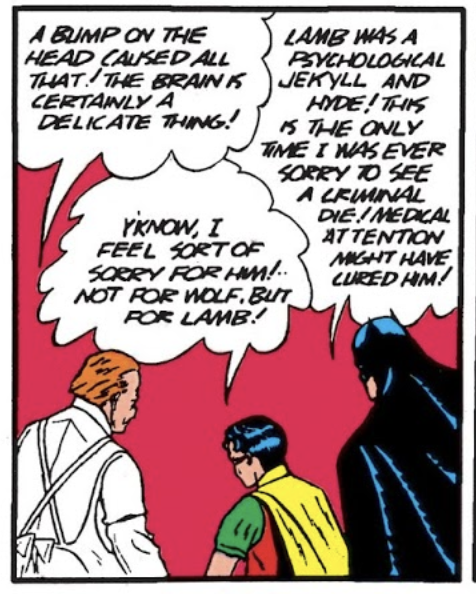
But the issue isn’t over just yet. Batman not only slaughters the mentally handicapped, but the physically handicapped as well. Behold Batman’s slowest villain : Clubfoot.
While on patrol, Batman witnesses a murder being committed by a weird dude with one giant foot and a hook for a hand. Upon confronting the guy, one giant shoe clobbers Batman into unconsciousness. And, surprise, the murder victim is yet another millionaire, Harley Storme. Just two issues in, it’s astonishingly clear that this town is not cut out for rich dudes… and there are hundreds of them stumbling around just waiting to be killed by low-quality thugs.
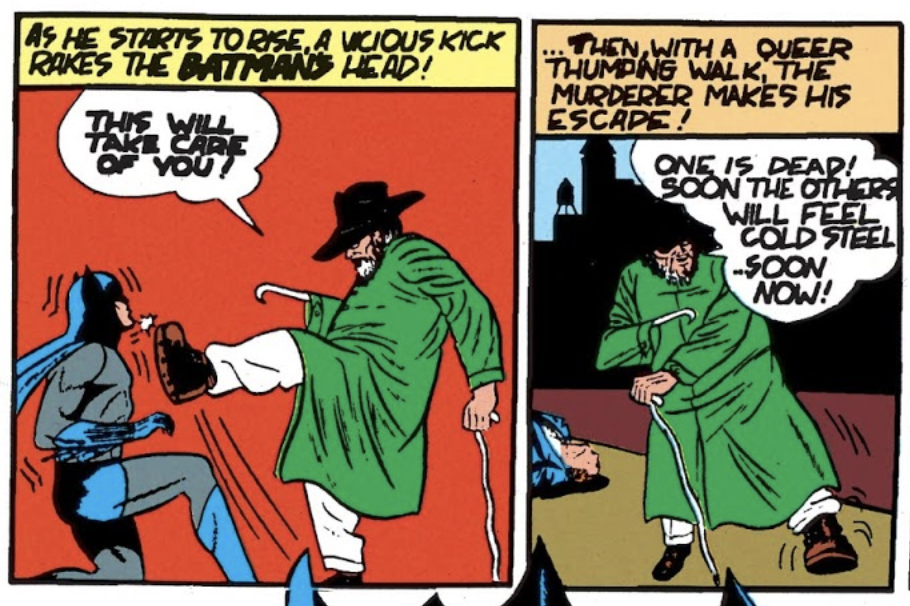
Not coincidentally, Bruce Wayne is also one of those rich dudes, and that somehow entitles him to unlimited ride-alongs with the police commissioner, Jim Gordon. Because there’s nothing that instills more confidence in a police force than watching them invite rich dillholes to ogle murder investigations. Turns out that there’s a lot of animosity between the members Harley Storme’s family and a guy named Clubfoot Beggs due to a disagreement over a literal gold mine. The wealth has subsequently torn apart the Storme family, who gather together for the reading of Harley’s will, but are left nothing but inscribed pieces of gold which will apparently solve a puzzle found in a letter to be opened at the end of 30 days. Bruce Wayne takes the opportunity to be a useless dick.
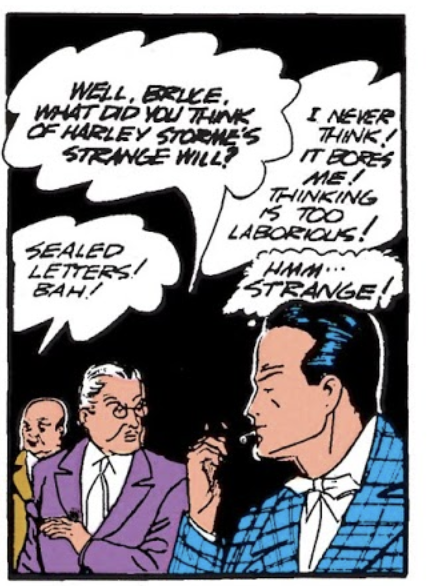
When another member of the Storme family is killed, Batman checks in with the family lawyer/will reader, Ward, just as hooligans are ransacking his place and seeking the as-yet-unclaimed Storme family fortune. During the battle, Batman once again tries out some new stand-up material.
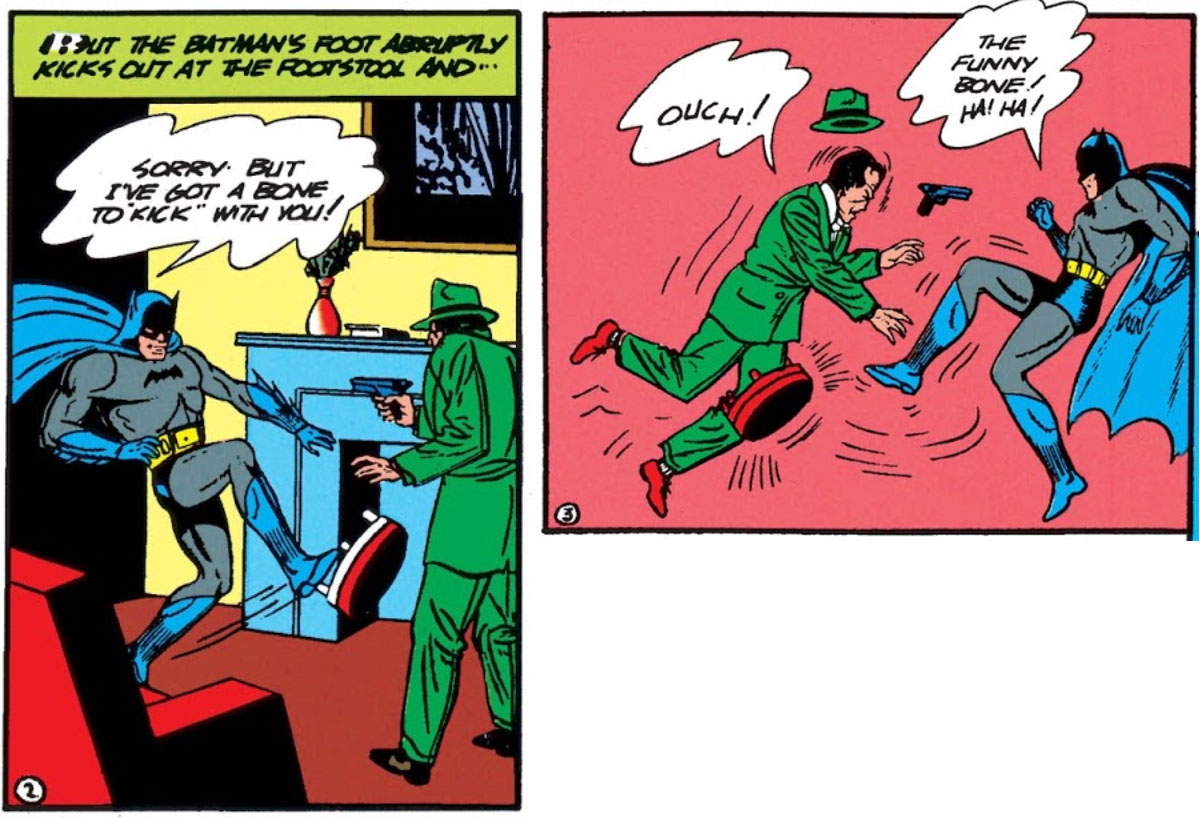
Ward is found being pried for information at an abandoned riverfront building, where all of the best torture takes place. Another battle follows, during which Robin demonstrates his gratuitously acrobatic moves, and Batman picks up a bad guy to beat other bad guys with. With Ward released, Robin goes to check in on the surviving members of the Storme family and finds one dead, while Batman decides to open the 30-days-later letter that would solve just about all of these problems.
In the midst of committing whatever kind of spiritual felony it is to go against someone’s dying wish, Batman finds Clubfoot tied up in Ward’s basement. Turns out Ward was masquerading as Clubfoot all along, and as one of Harley Storme’s beneficiaries, Ward would get even MORE cash if every member of the Storme family was out of the picture, making the family’s enemy, Clubfoot, a likely culprit. Ward, dressed as Clubfoot, walks in on the conversation between Batman and the real Clubfoot. He quickly loses a fight with Batman and Robin. And for once, Batman doesn’t just snap the guy’s neck or run him through a meat grinder or toss him into a tub of acid. Ward never reappears in comics again, though, so it’s entirely possible that he was served up as lunch at some city sausage cart. Early Batman was straight up savage.
“The Case of the Missing Link” begins when Batman sees a train, and well, it’s covered with pygmies. Batman savagely beats them up and tosses at least a dozen from the train in the most patronizing way possible.
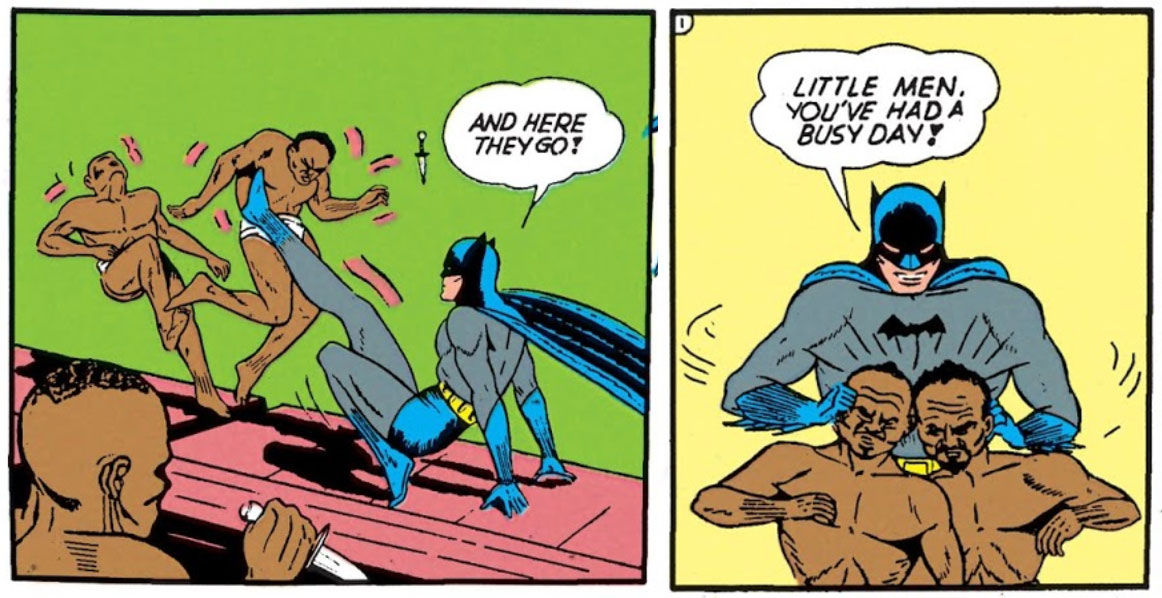
Fortunately, his legendary powers of deduction clued him in on the case before it was too late! What tipped him off?
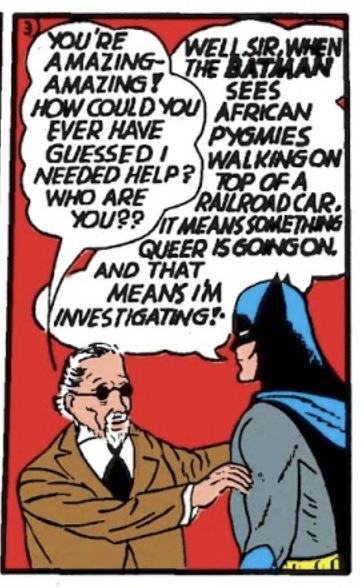
Anyhow, why would a bunch of natives attack a train? Turns out it’s because one of their buddies was kidnapped to be studied and/or appear in a museum exhibit. A great, big buddy. If one were to compile a list of the top ten times Batman was wrong, this would probably be right at the top.
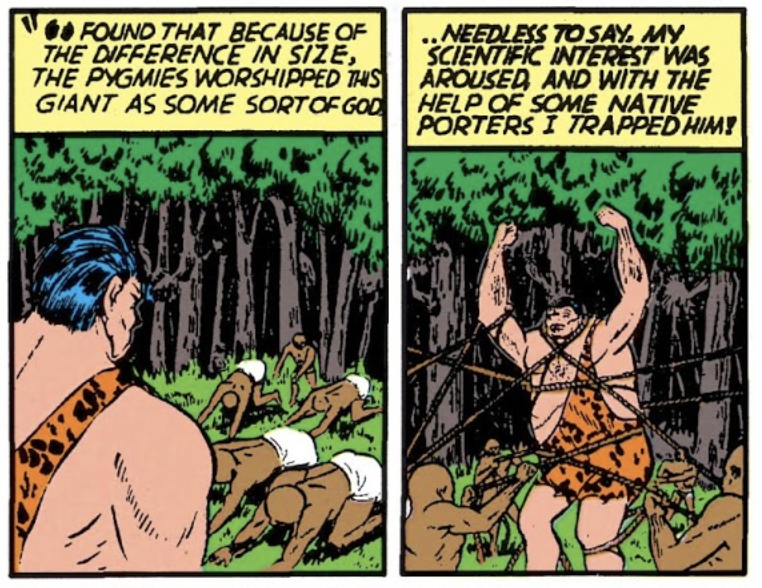
Not only does Batman implicitly approve of some imperialistic White Man’s Burden bullshit, but he beats up the guys trying to save a person who should rightfully have been left in the jungle. The writing itself has more shades of racism both subtle and pronounced than can be articulated in one place, but it’s a good reminder that it’s still 1940. Segregation was real, and views of other races and countries were highly problematic at best. In this tale, there’s no question that Batman is a villain by modern standards, but in 1940, “civilizing” a savage jungle person for misguided pseudo-science was heroic. Everyone knows that the only time this is morally okay is in an Encino Man situation.
A couple of circus promoters, who are always shady without exception, see the big news and decide that they want the big guy for their show. Snead and Hackett make their move.
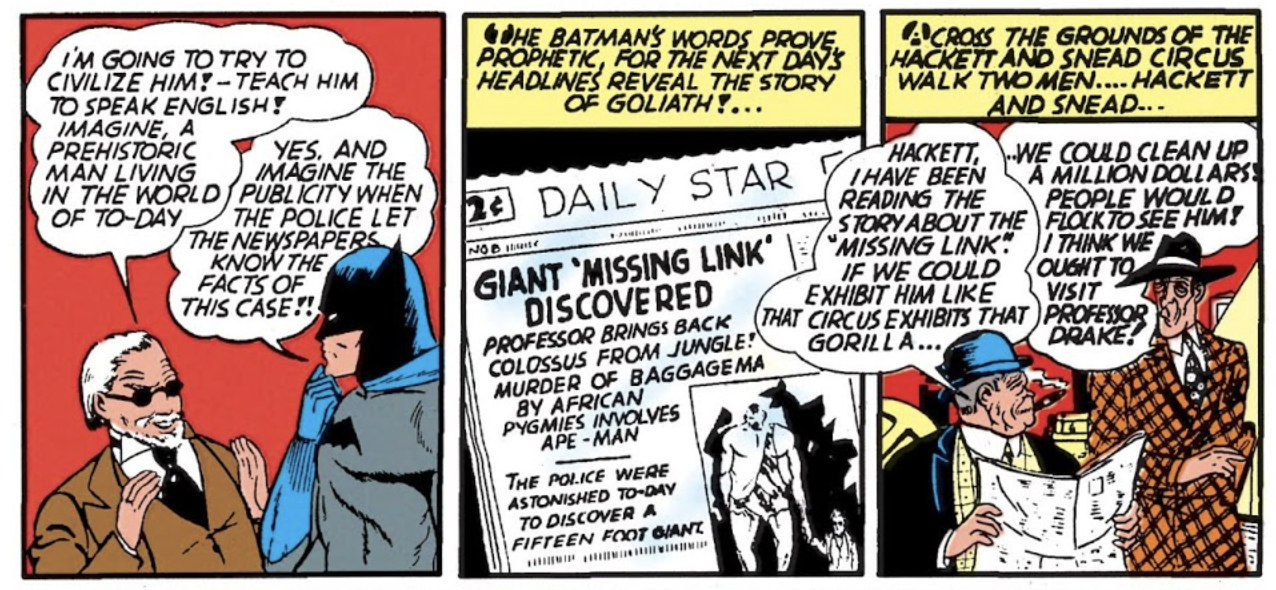
The good professor Drake is simply aghast that the circus would abuse his ape-man by putting him on display in a slightly different way than Drake himself was planning, taking the moral high ground where none could possibly exist. Drake locks the big dude in his shed and goes to sleep, knowing that he’s the slightly lesser villain in this story. It’s not long before Hackett and Snead’s pals shoot a sleeping Drake in the head and leave a fake suicide note.
In a truly disturbing pattern, Robin arrives a moment too late and a fight ensues. The goliath breaks free from his dirty shed to see what’s going on, and he’s shocked into a catatonic state when he finds his “beloved master” dead, in the worst case of Stockholm syndrome ever.
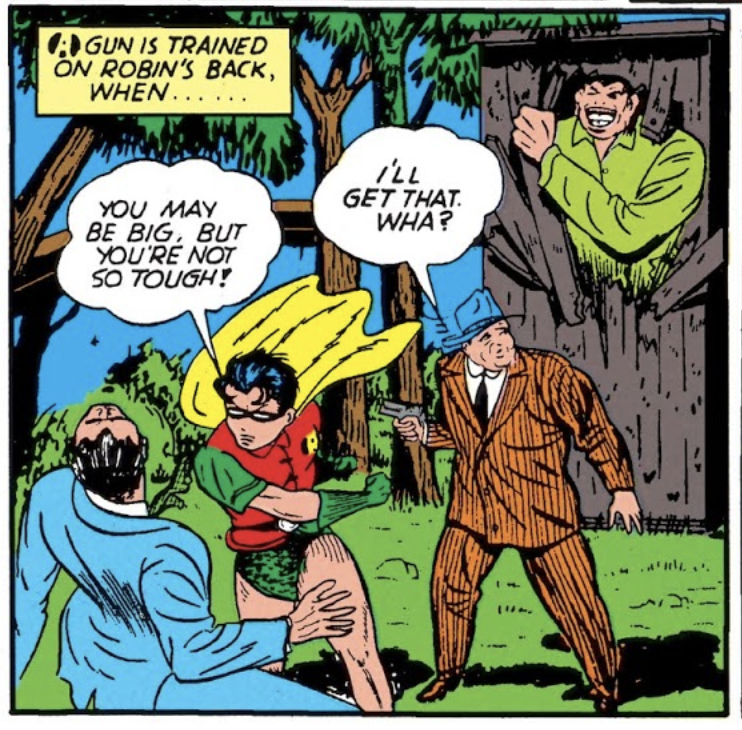
For reasons unknown, Robin leaves the scene of the crime, allowing the circusfolk to finally claim the man-monster, who is stupefied into submission… until he sees the face of his master’s killer, breaks free from his cage, and goes on an entirely justified rampage, breaking animal cages and generally causing the kind of madness people going to a circus really want to see. No one really comes to see the tamed lions, right? He beats one guy so hard that his head goes through the panel.
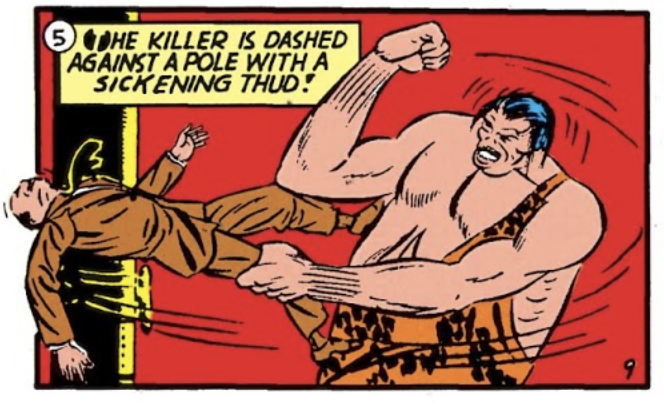
Batman and Robin fight their way through rampaging animals, capturing a lion in a net and calming an elephant into submission with “gentle prodding” – a courtesy that would not extend to the confused, lost, and desperate Goliath. The fight brings Batman and Robin up the girders of the circus tent, where Robin knocks Goliath in the head with a slingshot, sending the beast-man, ultimately, to his death.
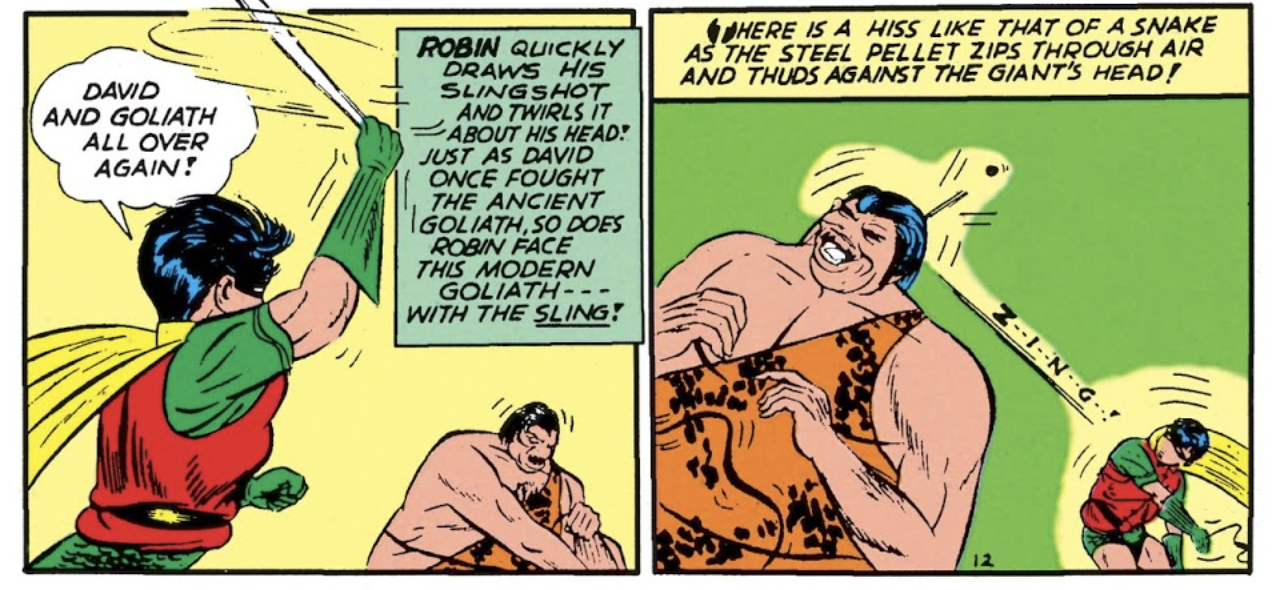
At this point, Goliath has killed fewer people than Batman has in this issue alone, but because he’s from the jungle, he’s not really entitled to free will. After Goliath’s neck is cracked from a fall that produces yet another “sickening thud” (since adjectives were apparently rationed in the 1940s), Batman expresses his usual ‘oh well’ attitude, and moralizes that the circus dudes were ALSO beasts… but definitely not the jackasses who kidnapped Goliath, upset a whole society of contented people, and killed a whole bunch of them in the interest of pulling some She’s All That crap on a happy, giant caveman.
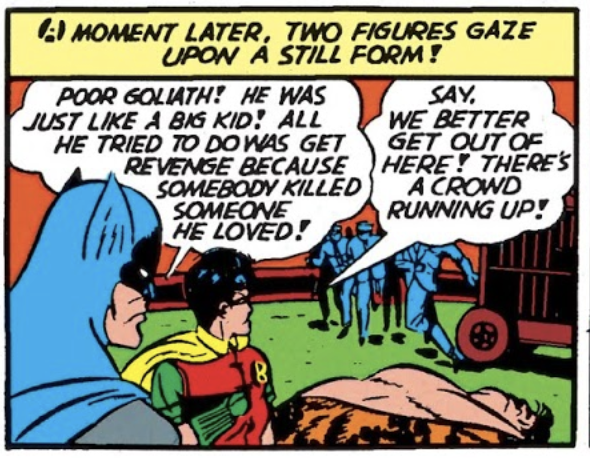
Definitely not them. File under ‘Times Batman Was the Real Villain’. Bob Kane and Bill Finger were both about 25 when this story came out; the 1930s were lousy with movies that made the jungle seem like a savage and mysterious place and made a habit of calling Africa “the Dark Continent.” Would it all fly today? Not a chance. It wasn’t even really a super great idea at the time.
Will Batman become less of a dick? Stay tuned.
All comic images are copyright DC Comics and presented here for the purposes of criticism & commentary.
 C. David is a writer and artist living in the Hudson Valley, NY. He loves pinball, Wazmo Nariz, Rem Lezar, MODOK, pogs, Ultra Monsters, 80s horror, and is secretly very enthusiastic about everything else not listed here.
C. David is a writer and artist living in the Hudson Valley, NY. He loves pinball, Wazmo Nariz, Rem Lezar, MODOK, pogs, Ultra Monsters, 80s horror, and is secretly very enthusiastic about everything else not listed here.
